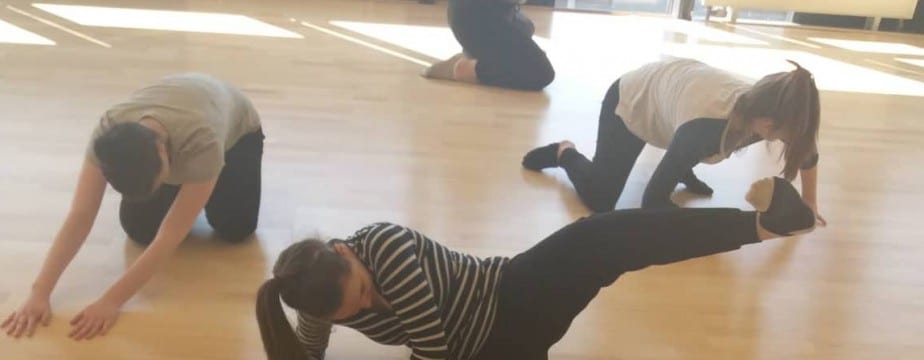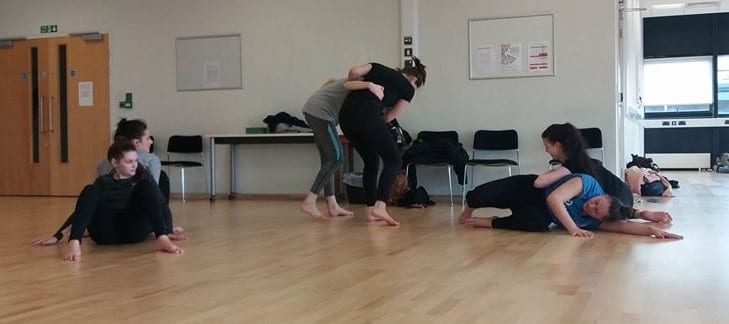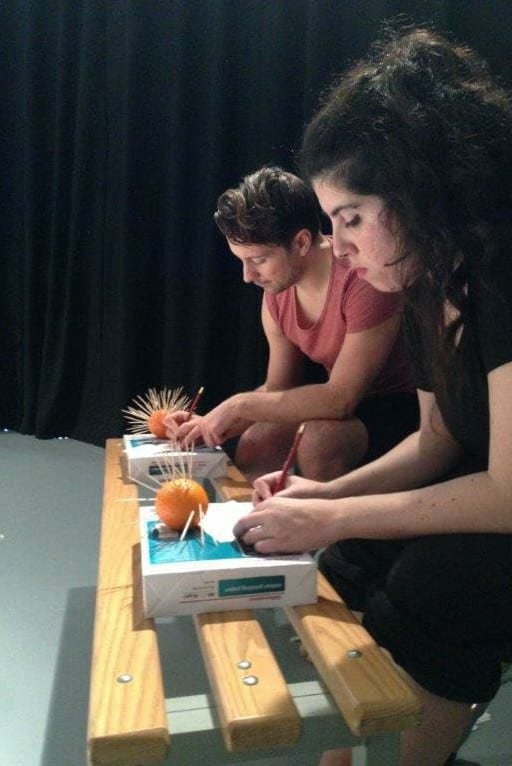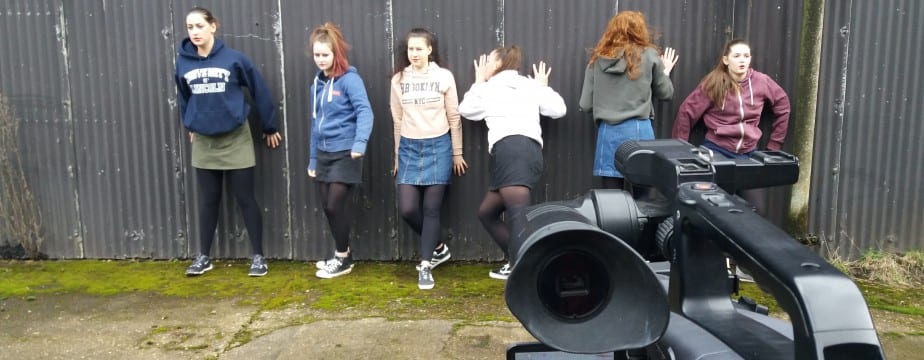For my final entry on this blog, I am making a comment on my final work “Re:patterning”.
On Monday 7th May at 11.00 am, fifteen people entered the theatre to watch six dancers moving and pushing themselves on the floor. The work lasted 32 minutes.
It started with a video of the dancers pushing a wall in an industrial space. This video was playing along the whole time.
- The video was not edited or filmed by a technician. The sound was abstract and it wasn’t pleasant to the ear. Next time, I should have an expert taking care of a/the video.
Then, dancers were pushing each other from side to side using the stage space.
Then, they started to dance a piece that was once characterised as “simple Graham”. I don’t know Graham technique so well as to choreograph based on it, but I consider this as a compliment, since my dance sequence had intentionally elements of structured legs and arms and simple jumps.
The dancers were scattered in space and moving on their own rhythm on my dance sequence, which I found really interesting every time. I always tried to find when some of them would do a movement simultaneously and that intrigued me every time even during the performance. When they finished, they approached the edge of the stage to recite their lines simultaneously towards the audience on their own time and then go back to continue their dance.
- My module tutor advised me to study Anna Teresa de Keersmaeker’s choreographies to find ideas of “patterns”. They really inspired me, because they were simple movements but, also, with significant changes that made the pieces interesting. This is what I wanted to achieve and, to my eye, I did.
Falling down, the dancers tried to find their pairs and, while reciting the text “Body pressure”, they were pushing each other and moving on stage. After many repetitions, they left the stage running.
The piece finished with a dancer reciting the lyrics of a famous song stating that each individual is unique. With that, I wanted to contribute to the circle of reciting texts, that Marina Abramovic started, with adding another text in my re-performance. Maybe, the next re-re-performer will start from that text and do something more or something else.
The dancers started again to push each other, until they disappeared along with the video.
- The dancers were wearing black clothes with red lipstick, in order to show that they are similar, but different in the ways they chose to wear them (one was wearing dress, the other tights etc). I decided I wanted black because of the atmosphere I wanted to create and because of the antithesis with the video wall.
- I wanted to give a message in this choreography, but I tried to remove the narrative and leave it really simple for the audience. My message was indeed that everyone is unique. We have our own times and timings, we push to have a space on the stage (of life) and we dance on our own rhythm. This is a conclusion from my own experience and from that I wanted to create something like “Re:patterning”.
- From the basic criteria for the piece, the audience could find:
Endurance, when dancers were pushing and talking for a long period of time
Rituals, with the silence when changing positions
Repetition, when pushing and pushing and pushing // repeating the dance sequence // repeating the text
- Unfortunately, I never had a dress rehearsal with the technicians, because of the slow process they had to follow to set the stage and the lights. Next time, I will arrange a gap of more than three hours to make sure that everything is on time and the stage is ready.
“Re:patterning” was a piece that I have never tried to create before, with repetition, rituals, without music, with talking, with video on the wall.
This was my first time and I will definitely remember what to take care of next time.



